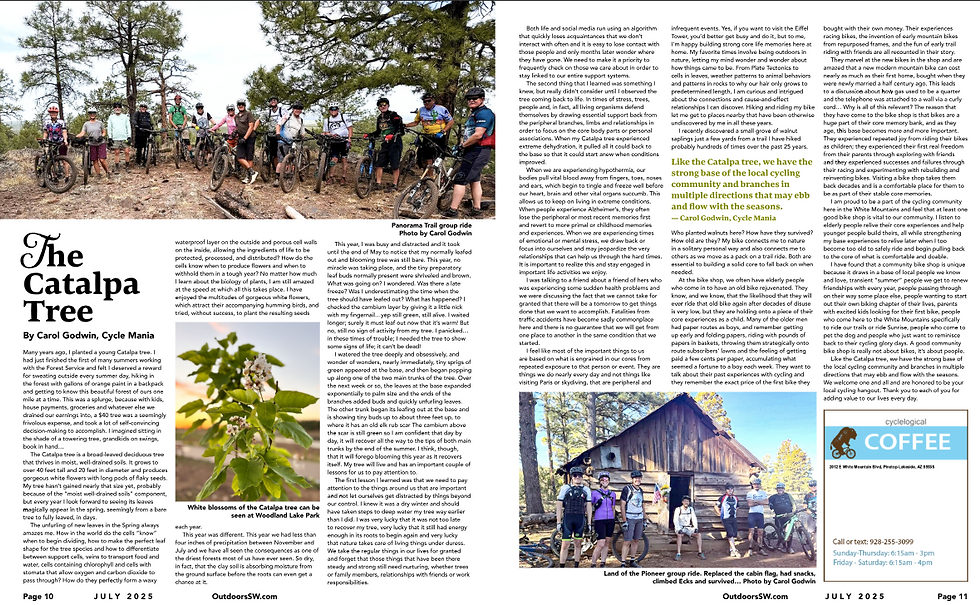Fall night riding- see and be seen
- Carol Godwin
- Sep 29, 2019
- 3 min read
Cooling fall temperatures bring out the best in riding conditions. You feel fresh, more invigorated and ready to tackle some of those longer rides that the summer heat might have been discouraging you from trying. Along with those cooler temperatures, Fall also brings shorter days and more opportunities or necessities of riding in the dusk or dark.
Recently, I was driving home late after work and the dreaded Walmart expedition, and spotted one of our friends coming back from an evening ride. He was appropriately dressed and had both head and tail light flashing, but he was virtually invisible to me as a driver. As a cyclist who has used lights before, I immediately recognized the small red dot flashing in a pattern as a bike light and looked to see who it was, but in reality, that small red dot was nearly completely lost in the jumble of light input coming from other cars, street lights reflecting off my hood, business lights and light reflecting up from the street itself. This scared me- not only could a tragedy happen to our treasured friend, a tragedy could easily happen to a driver who's brain doesn't filter out and recognize that small red dot in front of them.
Studies show that 30% of cycling fatalities happen during dark hours although only 5% of cycling activity occurs during those hours. Cyclists over-estimate the safety that head and tail lights give them and overestimate the ability of drivers to correctly see and identify them in time to react. What steps can be taken to reduce the risk of cycling at night?
First off, its important to recognize the difference between fluorescent and reflective material. Fluorescent materials reflect UV light and thus are only effective in sunlight. Vehicle headlights do not contain UV light and therefore do not reflect off of fluorescent material, making that fluorescent jersey no more visible at night than traditional clothing. Reflective material is designed to reflect white light and works exceptionally well at night, but does not provide much visibility during the day. It is important to keep this in mind when choosing your wardrobe for your planned ride. (BTW, MTBers, this applies to you too- especially in the fall. Hi-vis clothing in the woods in the fall provides protection for you and a head-up to hunters looking for elk or other game moving through the trees.)
Studies have shown that reflectivity, along with movement, provides the best visual input to drivers, meaning that along with wearing reflective clothing, you should also have reflective spots on your moving parts: ankles and knees being the moving parts of your body and pedals and spokes being the moving parts of your bike. Reflective leg straps aren't just for keeping your pants leg out of the chain... and reflective spoke clips and rim strips aren't just for parades. Both could be easy and cheap life-saving investments.
We currently carry both fluorescent and reflective jackets and most cycling apparel contains at least some reflective material in hems or seams. We also carry reflective leg bands and will be doing more research into which reflective cycling vests and reflective tapes are most effective. The safety of our friends and customers is our top priority and driving past my nearly invisible friend on the road recently really brought home the importance of doing our best to keep friends, family and customers as safe as possible.
Hey- we dress our dogs in reflective bandannas when we go out at night, why not take the same care of our 2-wheeled friends? Keep on peddling- see you out there.

































Comments